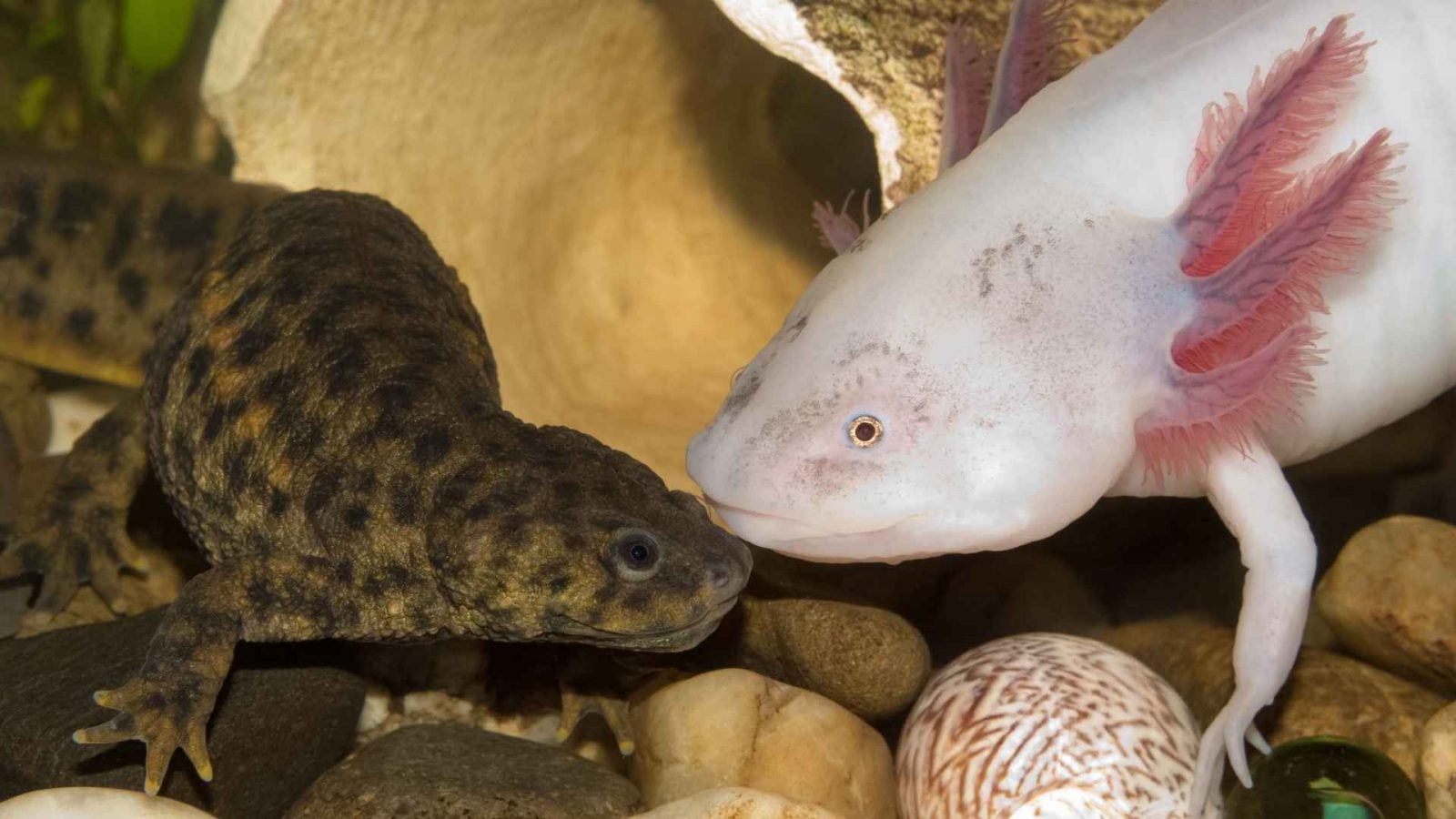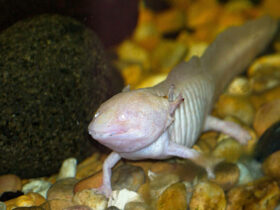
Contents
Is A axolotl A Boy or a girl? – Introduction

Axolotls are captivating amphibians that have gained popularity recently due to their unique appearance and impressive regenerative abilities. Often referred to as the Mexican walking fish, axolotls are not fish but salamanders that retain their aquatic form throughout their lives. While they may appear similar, discerning the gender of axolotls can be challenging for the untrained eye. This article aims to shed light on the topic and provide insights into determining if an axolotl is a boy or a girl.
How To Tell An Axolotl’s Gender: https://m.youtube.com/watch?v=FfS6NznxESU&pp=ygUdSXMgQSBheG9sb3RsIEEgQm95IG9yIGEgZ2lybD8%3D
Understanding Axolotl Sexual Dimorphism:
Axolotls exhibit sexual dimorphism, which means physical differences between males and females can be observed with careful examination. However, these differences are only sometimes evident once the axolotls reach a certain age or size. We’ll explore the key characteristics that can help distinguish between male and female axolotls.
External Sexual Characteristics:
a. Cloaca Shape: The cloaca is an opening for reproduction and excretion. The cloaca resembles a small swelling in mature male axolotls, while in females, it appears as a slit or indentation.
b. Variations in Body Shape: Male axolotls are generally slimmer and more streamlined than females, especially during the mating season when their bodies become elongated.
Additional Visual Cues:
a. Nuptial Tubercles: During the breeding season, males develop small, rough bumps called nuptial tubercles on their fingers, toes, and sometimes on the head. Females usually lack these tubercles.
b. Size Differences: Females tend to be slightly larger and bulkier than males, but this characteristic alone does not indicate their gender.
Confirmation through Behavior:
a. Courtship Rituals: Male axolotls engage in elaborate courtship displays, including nudging, biting, and tail-waving to attract females. Observing such behavior can provide further evidence of an axolotl’s gender.
b. Egg-Laying Behavior: Only female axolotls are capable of laying eggs. If an axolotl produces eggs, it is undoubtedly a female.
Professional Assistance:
If it remains difficult to determine the gender of an axolotl even after considering the above factors, consulting an experienced veterinarian or a knowledgeable axolotl breeder can be helpful. They can employ more advanced methods, such as ultrasound imaging or DNA analysis, to accurately determine an axolotl’s gender.
Confirmation through Behavior
When it comes to determining the gender of an axolotl, behavior can serve as a pretty good indicator. These fascinating creatures have their own courtship rituals that will grab your attention. Male axolotls are known to go all out to woo the ladies. We’re talking nudging, biting, and tail-waving to attract a potential mate. If you witness these elaborate courtship displays, you can be confident that you’re dealing with a male axolotl.
But what about egg-laying? Well, that’s something only female axolotls can do. So, if you come across a clutch of eggs in your tank or notice your axolotl going through the motions of laying eggs, there’s no doubt about it – you’ve got yourself a female.
Professional Assistance
Now, let’s say you’ve carefully examined all the external characteristics and observed the behavior of your axolotl, but you’re still unsure about its gender. Don’t worry; this is where the experts come in. Sometimes, determining an axolotl’s gender can be challenging, even for seasoned enthusiasts.
In such cases, it always helps to seek professional assistance. Experienced veterinarians or knowledgeable axolotl breeders have seen it all and can employ more advanced methods to determine an axolotl’s gender accurately. Ultrasound imaging and DNA analysis are tools they may use to get down to the nitty-gritty.
Calling in the Experts
When all else fails, it’s time to seek out professional help. Experienced veterinarians or knowledgeable axolotl breeders have seen it all when determining axolotl gender. They have a wealth of knowledge and access to more advanced methods to accurately determine whether your axolotl is a boy or a girl.
Tools of the Trade
So, what kind of fancy tools do these experts have? Well, one tool they may use is ultrasound imaging. Yes, you heard that right – an ultrasound for axolotls! This non-invasive method allows them to peek inside your axolotl and closely examine their reproductive organs. It’s like having an axolotl version of an ultrasound technician!
But wait, there’s more! Another tool that may be used is DNA analysis. This involves taking a sample from your axolotl and analyzing its DNA to determine gender. Talk about high-tech detective work!
The Nitty-Gritty
With these advanced methods at their fingertips, the experts can delve into the nitty-gritty details of your axolotl’s biology to accurately determine its gender. They can remove all the guesswork and provide you with a definitive answer.
Conclusion
In conclusion, determining the gender of your axolotl isn’t always a walk in the park – but it sure is fascinating! These strange and mysterious creatures may not reveal their secrets at first glance, but you can uncover the truth with careful observation and maybe a little help from professionals.
Remember, accurately determining your axolotl’s gender is important for providing them with the proper care, breeding, and maintaining a happy and healthy axolotl community. So, keep pursuing the quest to discover your axolotl’s true identity. Whether it’s through examining external characteristics, decoding behavior cues, or seeking professional assistance, the mystery will eventually be solved!
So go forth, fellow axolotl enthusiasts, and continue on your journey to unlock the secrets of these enigmatic creatures. The more we learn about them, the better equipped we’ll be to care for them and give them the love and attention they deserve.
Determining the gender of an axolotl can be both intriguing and challenging, as their external differences may not be immediately apparent. By closely examining external characteristics, observing behavior, and seeking professional assistance when needed, enthusiasts can better understand whether their axolotl is a boy or a girl. Accurately determining their gender is essential for proper care, breeding, and maintaining a healthy axolotl community.
We’ve covered a lot of ground in our exploration of axolotl gender determination, but there’s still more to uncover! Sometimes, no matter how hard we try, we can’t seem to crack the case alone. And that’s okay!
More Links:
Why Are Axolotls So Popular? – Reasons Why Axolotls Have Become a Popular Pet Choice in ’23! https://adoptanim.com/why-are-axolotls-so-popular/
How Is Axolotl Born? – Axolotl Reproduction: A Fascinating and Unique Phenomenon.: https://adoptanim.com/how-is-axolotl-born/





Leave a Reply